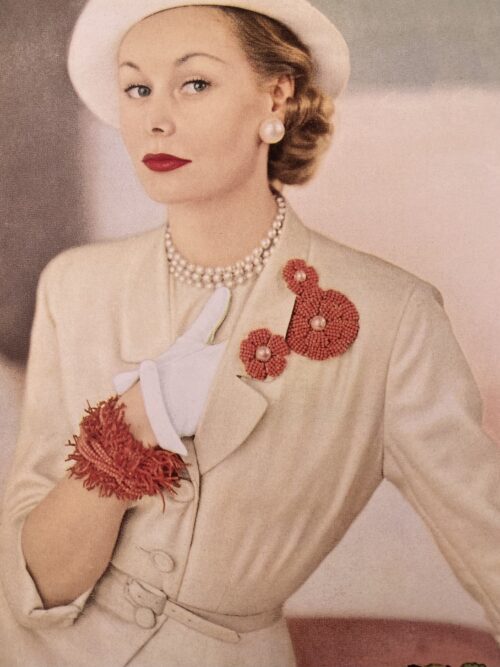By Stuart Dyer

1951 photo of a model wearing Miriam Haskell coral brooches
In the world of vintage costume jewelry, Miriam Haskell is one of the most recognizable, collectible, and enduring jewelry brands of the 20th century but relatively little is known about the woman, Miriam Haskell (July 1, 1899 – July 14, 1981). As I was researching Haskell, I was surprised to learn that she has a Chicago connection. In the early 1920s after growing up in Indiana, Haskell attended the University of Chicago for three years. She didn’t end up graduating from there but instead left Chicago in 1924 with $500 in her pocket (most likely a gift from her father) to pursue her dream of opening a jewelry boutique in New York City. Her dream came true in 1926 and Haskell opened a boutique in midtown Manhattan at the McAlpin Hotel. The boutique was called, ‘Le bijou de l’heure’ or ‘Jewelry for every occasion.’ It reflected Haskell’s belief that rather than wearing the same jewelry all of the time, that a woman should wear different jewelry for different occasions.

Display case from the Miriam Haskell boutique at Saks Fifth Avenue circa 1938
When Haskell opened her boutique she hired Frank Hess to design jewelry. Hess ended up being with The Miriam Haskell Company for 36 years – longer than Haskell herself. It has often been a source of speculation as to how much designing Haskell actually did. Hess is largely credited for having created the signature Miriam Haskell look. We will never know for certain, but one thing is for sure – Haskell was an incredible businesswoman. Within a year of opening her first boutique a second shop was opened at West Fifty Seventh Street. In the 1930s the company gained continued success with several developments: it relocated to 392 Fifth Avenue, it opened boutiques at Saks Fifth Avenue and Burdine’s department stores and it opened a boutique shop in London. In a short period of time Haskell had established a hugely successful costume jewelry company whose clientele included such luminaries as Gloria Vanderbilt, Joan Crawford, Lucille Ball, and Wallis Simpson, the Duchess of Windsor.

Joan Crawford wearing a Miriam Haskell necklace in 1960
The jewelry created by The Miriam Haskell Company was beautifully hand-crafted in their own workshops. Many of the workers were refugees who had come to America as trained fine jewelers. The jewelry was given special attention to detail and only the finest glass beads, faux pearls, and jewelry findings sourced from Europe were used.
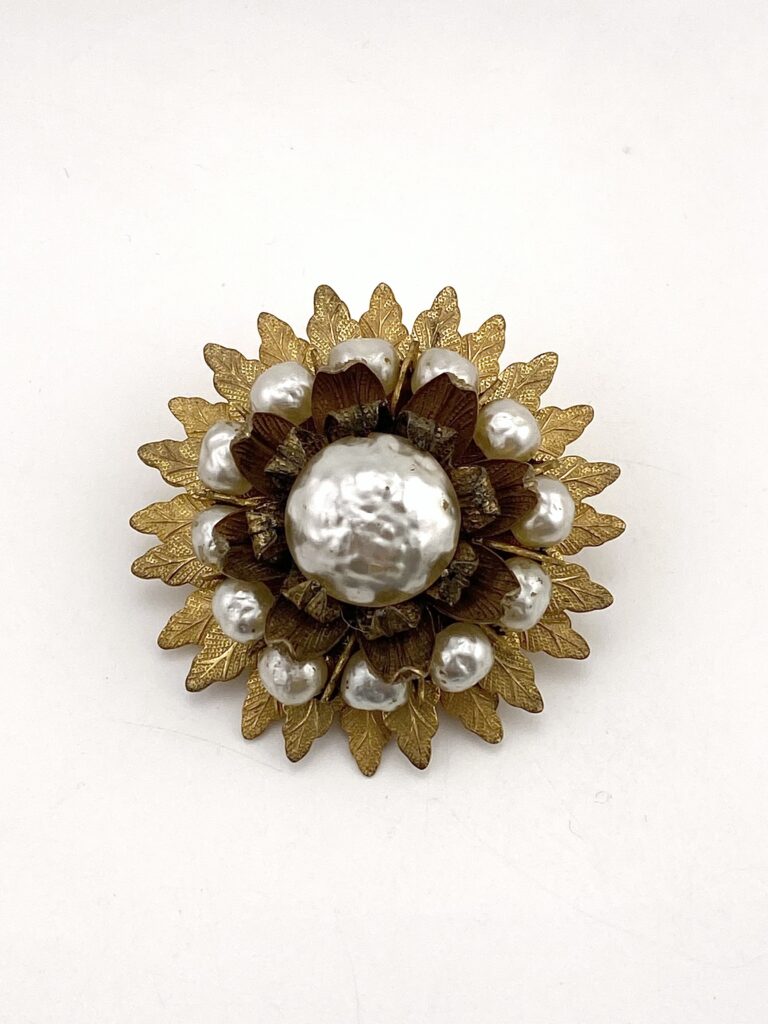
During the 1920s when Miriam Haskell was founded, there was an economic boom and women wanted to express this sense of prosperity through their clothing and jewelry. Up until this time elegant ladies had only worn real jewelry. In the post war years however, women wanted to wear a more celebratory ostentatious look and were attracted by the idea of fashion jewelry – a new concept. It was during this period in France that Coco Chanel launched her ‘vrais bijoux toc’ or ‘real fake jewelry.’ Chanel encouraged mixing real jewelry with costume and piling it on. This was a concept that also caught on in America and Miriam Haskell’s jewelry was the American answer to Chanel as it rivaled its quality.
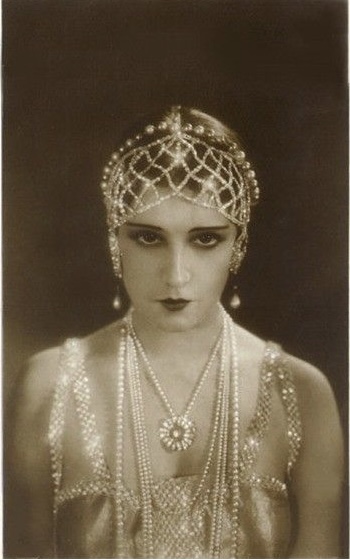
1920s Flapper adorned in the ‘more is more’ jewelry look of the day
The Miriam Haskell Company’s enduring success throughout the decades stemmed from the fact that it was agile and able to adapt to the times.
During the Great Depression Miriam Haskell not only stayed afloat but in fact increased its clientele. Women who couldn’t buy new clothing used costume jewelry to liven up last season’s outfits. Women who could no longer afford real jewelry but who were used to wearing jewelry turned to costume. Those who had been spared the effects of the Depression, who could still afford to buy real jewelry followed Cecil Beaton’s advice and turned to costume jewelry instead. In 1930 Beaton advised that: ‘It is vulgar to be rich and eccentric…even if you have not lost your fortune, you must pretend you have.’
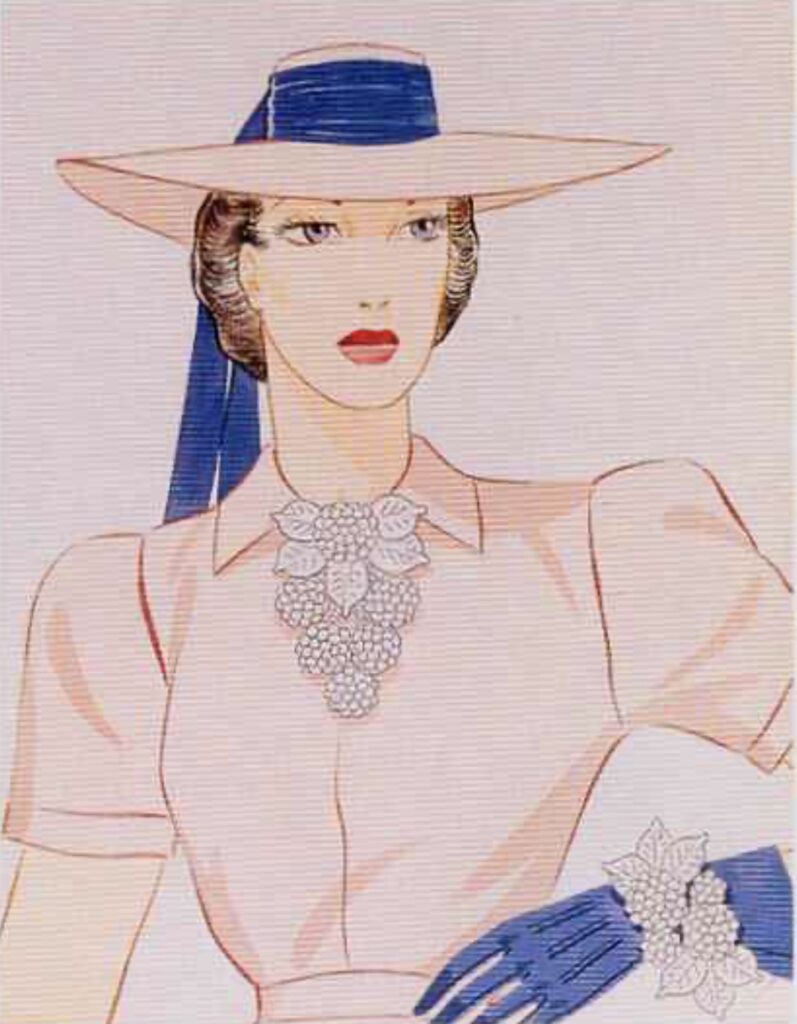
1937 Watercolor by Larry Austin of a Miriam Haskell clip and wrap bracelet designed by Frank Hess
During the rationing of materials in WWII the Miriam Haskell Company created some of its most innovative jewelry. This was despite the fact that they no longer had access to a lot of metals and were no longer able to source European beads, pearls, findings, etc.. Typical pieces designed by Frank Hess and produced during this period included ones using a minimum amount of metal, and non-traditional ornaments such as shells, seeds, wood, leather, and plastics.
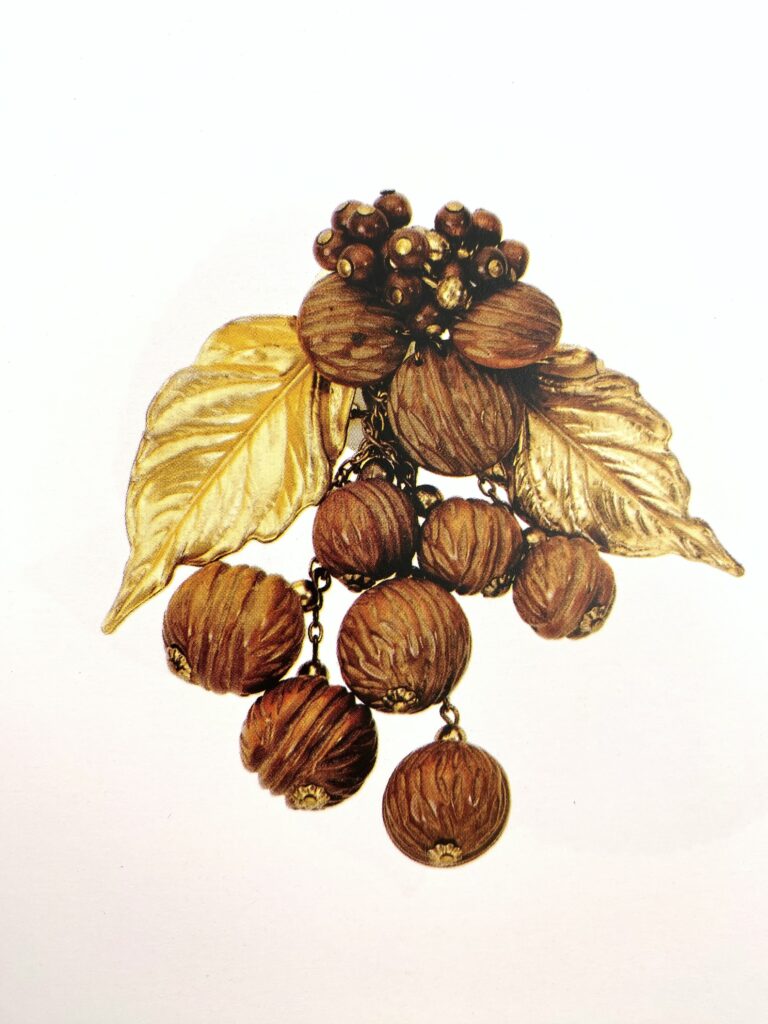
1938 Miriam Haskell walnut dress clip designed by Frank Hess and made out of carved wood
In 1950 because of mental health issues, Miriam Haskell was forced to retire from the namesake company that she had founded. The company was taken over by her brother and passed through various hands. Ironically, it was around 1950 when the Miriam Haskell Company began to sign their jewelry. Until this point it was unsigned. Beginning in 1947, pieces were occasionally signed with “Miriam Haskell” in a circle stamped directly onto the metal. In 1948, the jewelry was signed with a horseshoe shaped plaque stamped with ‘Miriam Haskell’ on it. This mark was only used for a couple of years. Starting in 1950 jewelry was signed with an oval cartouche stamped with ‘Miriam Haskell’ on it.
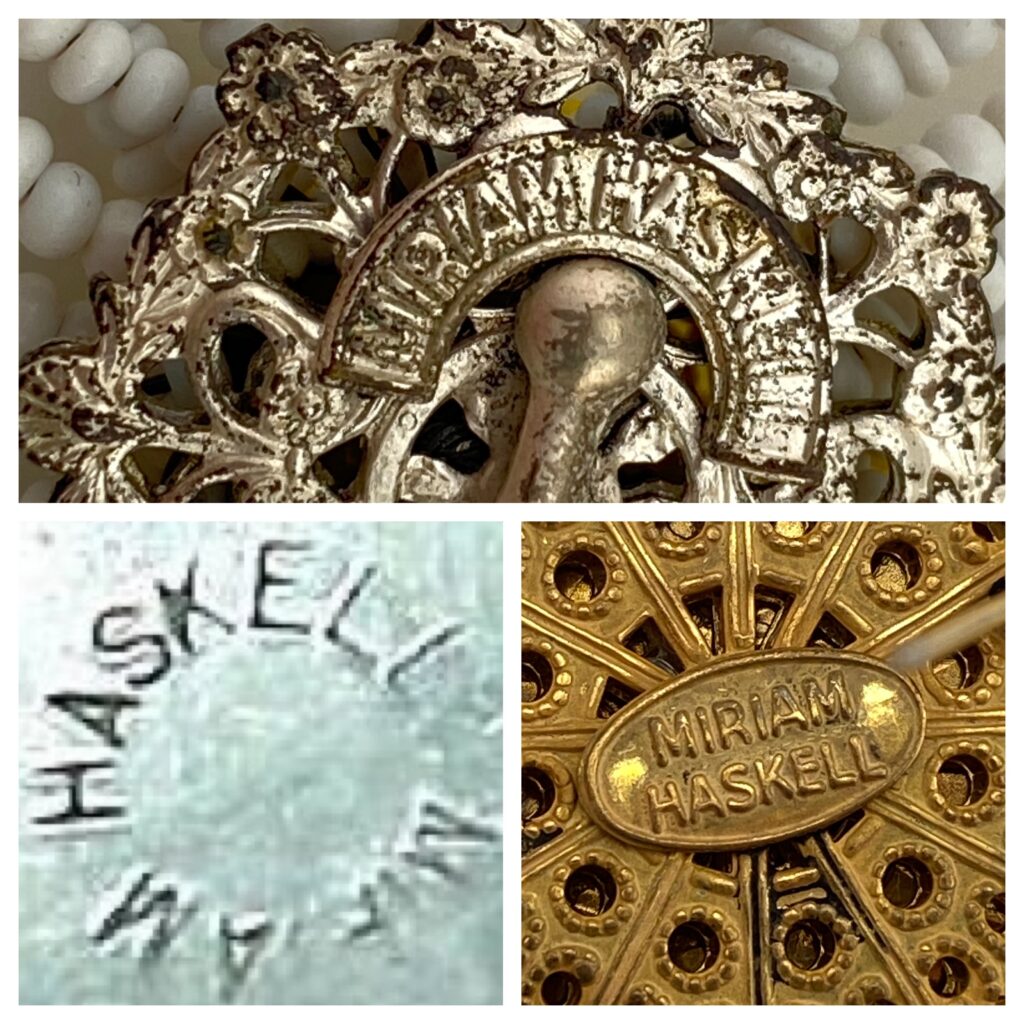
Miriam Haskell maker’s marks. Clockwise from top – horseshoe mark used starting in 1948, oval cartouche used starting in 1950, earliest mark used in 1947.
Frank Hess stayed at Miriam Haskell as head designer until 1960, when he was succeeded by Robert Clark (from 1960 to 1968). Other designers would follow. Each brought their own sensibility to the jewelry designs but still managed to stay true to the Miriam Haskell look. The Miriam Haskell Company continued to thrive throughout the decades. It remains a testament to its founder, Miriam Haskell the woman who envisioned a place for a line of high-end costume jewelry in America and took a chance to make her vision a reality.
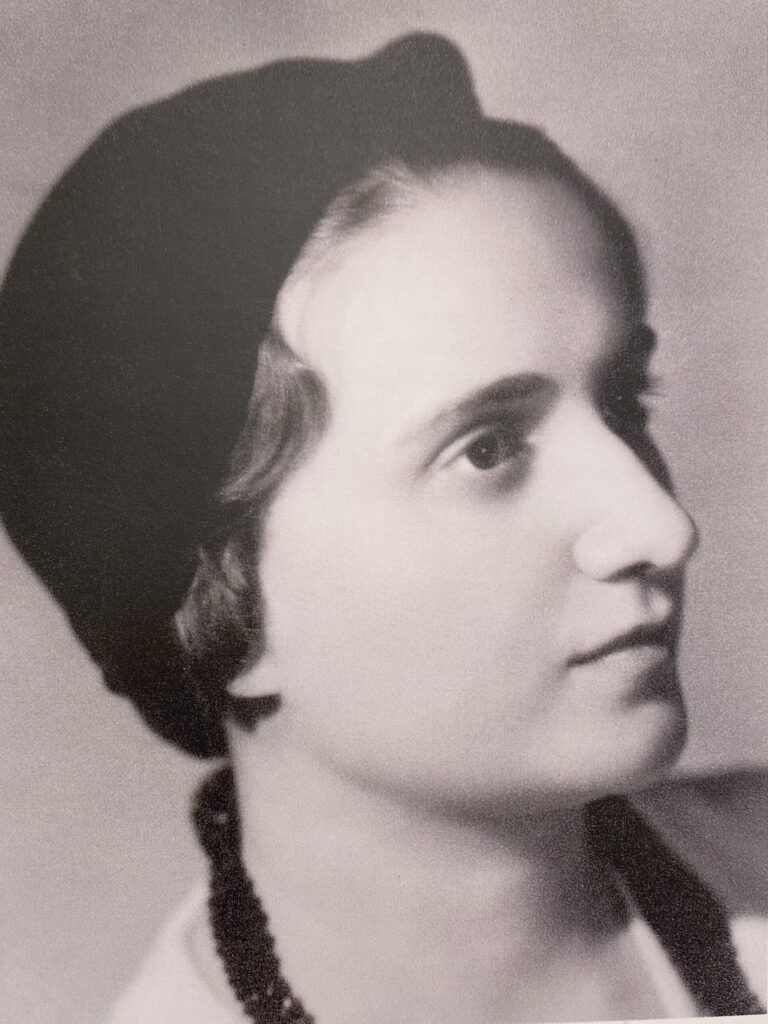
1930s portrait of Miriam Haskell
Stuart Dyer is the owner of Ladybug Vintage
For more vintage Miriam Haskell
follow @ladybugvintage on Instagram
or go to https://ladybugvintage.com/



